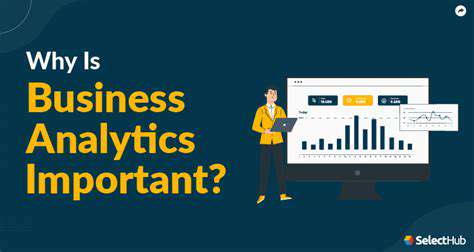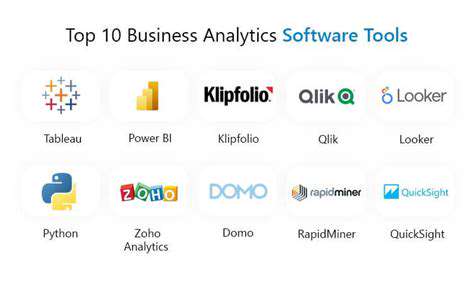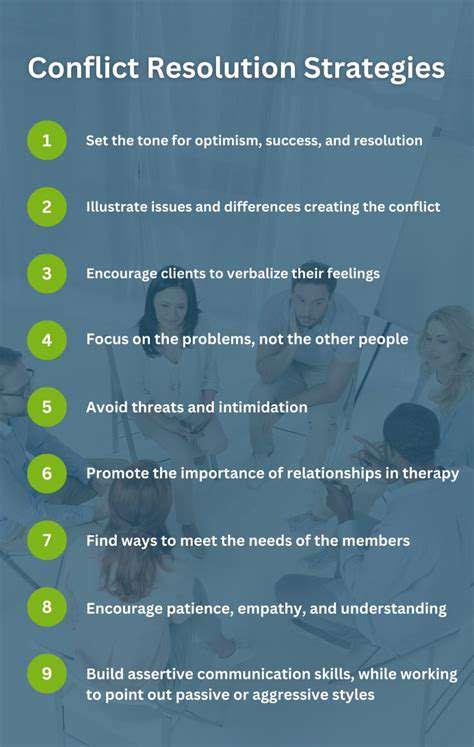Guide to Understanding Business Analytics
What is Business Analytics, and Why is it Important?

What is Business Analytics?
Business analytics is a broad field that encompasses the use of data, statistical analysis, and quantitative methods to understand and solve business problems. It involves collecting, cleaning, transforming, and analyzing data to identify trends, patterns, and insights that can inform strategic decision-making. Business analytics aims to optimize business processes, improve efficiency, and increase profitability by leveraging data-driven insights.
Key Components of Business Analytics
Several key components contribute to the effectiveness of business analytics. These include data collection from various sources, data cleaning and preparation to ensure accuracy and consistency, and statistical modeling to identify patterns and relationships within the data. Data visualization techniques are also critical in communicating complex findings to stakeholders in a clear and concise manner.
Data Sources in Business Analytics
Modern business analytics leverages a wide array of data sources. These range from transactional data within the company's own systems to external data sources like market research reports, social media feeds, and economic indicators. Successfully gathering and integrating these diverse data sources is crucial for comprehensive analysis and a more holistic view of the business landscape.
Analytical Techniques in Business Analytics
A variety of analytical techniques are used in business analytics, including descriptive analytics, which focuses on summarizing past performance; predictive analytics, which forecasts future outcomes; and prescriptive analytics, which recommends actions to achieve desired results. Each technique offers specific insights into different aspects of the business, and their combined application often yields the most comprehensive understanding.
Business Analytics and Decision-Making
Business analytics plays a pivotal role in empowering data-driven decision-making. By providing insights into customer behavior, market trends, and operational efficiency, it equips businesses to make informed choices that lead to better outcomes. Leveraging these insights allows businesses to adapt to changing market conditions and optimize their strategies for long-term success.
The Role of Technology in Business Analytics
Modern business analytics relies heavily on advanced technologies, including cloud computing, big data platforms, and machine learning algorithms. These technologies enable businesses to process massive amounts of data quickly and efficiently, uncover hidden patterns, and gain insights that would otherwise be impossible to obtain. This technological advancement is fundamental to the success of any business that aims to leverage the power of data to drive strategic initiatives.
The Future of Business Analytics
The future of business analytics is bright, with increasing emphasis on artificial intelligence (AI) and machine learning to automate tasks, predict outcomes, and provide more sophisticated insights. The ability to analyze and interpret data will become even more crucial for businesses as they navigate an increasingly complex and data-rich environment. This evolution will likely lead to a greater demand for skilled professionals in the field of business analytics. The continual development and application of these techniques will further enhance decision making processes and drive business growth.
Applying Business Analytics in Different Business Functions

Applying Business Analytics in Different Industries
Business analytics is a powerful tool that can be applied across a wide range of industries, from retail and manufacturing to healthcare and finance. It allows companies to gain valuable insights from data, enabling them to make better decisions, improve operational efficiency, and ultimately drive profitability. By analyzing historical data and market trends, businesses can identify patterns and predict future outcomes, leading to more strategic and informed business practices.
Different industries face unique challenges, and business analytics can provide tailored solutions. For example, retailers can use analytics to optimize inventory management, personalize customer experiences, and predict future sales trends. Manufacturing companies can leverage analytics to improve production processes, reduce waste, and enhance product quality.
Retail Industry Applications
In the retail sector, business analytics plays a crucial role in understanding consumer behavior and optimizing sales strategies. Retailers can use data from various sources, such as point-of-sale systems, customer relationship management (CRM) databases, and social media platforms, to gain a comprehensive view of their customers' preferences and purchasing habits.
Analyzing sales data can reveal trends in customer demand, allowing retailers to adjust their inventory levels and product offerings accordingly. This data-driven approach helps maximize profitability and minimize waste, ultimately leading to a more efficient and profitable business model.
Manufacturing Industry Applications
Within the manufacturing sector, business analytics can be instrumental in optimizing production processes. By analyzing data from various sources, such as machine sensors, quality control reports, and production logs, manufacturers can identify areas for improvement and reduce operational costs.
Predictive maintenance, enabled by analytics, allows manufacturers to anticipate equipment failures before they occur. This proactive approach minimizes downtime and prevents costly repairs, improving overall efficiency and reducing operational expenses. This is a key area where analytics can save significant money for manufacturing companies.
Healthcare Industry Applications
In healthcare, business analytics can be used to improve patient outcomes and optimize resource allocation. Analyzing patient data, such as medical history, treatment records, and demographics, can help healthcare providers identify patterns and trends that could improve patient care.
Analytics can also aid in identifying potential health risks and providing personalized treatment plans. By leveraging data insights, healthcare organizations can improve resource management, enhance operational efficiency, and ultimately reduce costs while enhancing patient satisfaction.
Financial Industry Applications
The financial industry heavily relies on business analytics for risk management, fraud detection, and investment strategies. By analyzing financial data, including market trends, customer behavior, and transaction patterns, financial institutions can identify potential risks and develop effective strategies to mitigate them.
Effective fraud detection is a critical application of analytics in the financial sector. By identifying suspicious patterns in transactions, financial institutions can prevent fraudulent activities and safeguard their assets. This proactive approach is essential for maintaining customer trust and protecting the financial system.

Read more about Guide to Understanding Business Analytics
Hot Recommendations
- How to Stay Productive While Working Remotely
- Tips for Managing Conflict with Coworkers
- Entrance & Certification Exams (升学考试)
- How to Improve Your Storytelling Skills (Speaking)
- How to Find Profitable Side Hustles
- Tips for Preparing for the TOEFL iBT Home Edition
- Guide to Switching Careers from [Industry A] to [Industry B]
- How to Run an Effective Hybrid Meeting
- Tips for Marketing Your Side Hustle on Instagram











